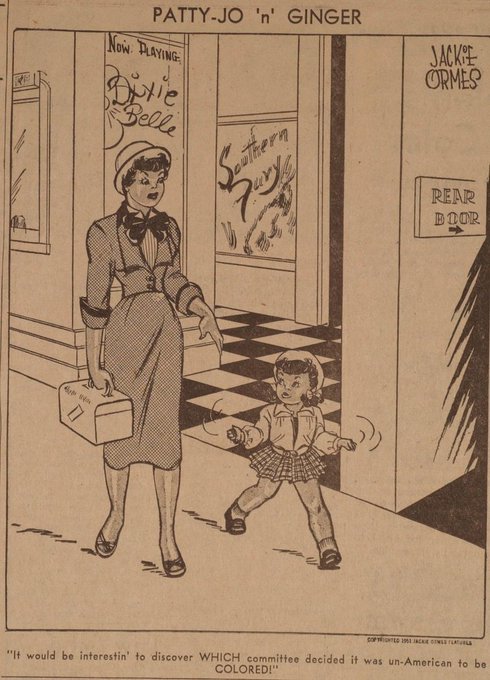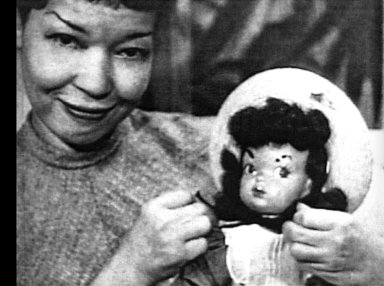
Google Google's September 1 Doodle celebrates the life of American cartoonist and activist Jackie Ormes.
Jackie Ormes was an American cartoonist and activist who is being celebrated as Google’s latest Doodle, according to the company.
Google unveiled the new logo illustration, by Philadelphia-based guest artist Liz Montague, on September 1 as a tribute to Ormes’ contributions toward stripping “away negative stereotypes one panel at a time.”
From the late 1930s to mid-1950s, the Pennsylvania native made a name for herself as the first and only Black female cartoonist of her time through her satirical cartoons and comic strips that “challenged the derogatory portrayals of Black female characters prevalent in the media,” Google wrote in its announcement.
The colorful Doodle offers a portrayal of the timeline of Ormes’ life, “from her beginnings as a self-taught artist to a powerhouse cartoonist and humorist whose work continues to inspire,” Google said.
It was also launched on the same day that Ormes’ “groundbreaking” single panel “Patty-Jo ’n’ Ginger” debuted in 1945 in the Pittsburgh Courier, the company added.
Here’s what you need to know about Jackie Ormes:
1. She Was Born in 1911 as Zelda Mavin Jackson
Ormes, whose birth name was Zelda Mavin Jackson, was born on August 1, 1911, in Pittsburgh, Pennsylvania, according to her Google Doodle bio.
The release added that Ormes taught herself how to draw during his childhood, later showcasing her cartoons in her high school year book.
She married Earl Ormes, a hotel manager, in 1936, the Heroine Collective continued. The two lived a “happy marriage” and moved to Chicago in 1942, the Collective said.
2. Ormes Worked as a Freelance Reporter for the Pittsburgh Courier & Had Her First Comic Strip Published in 1937
After high school, Ormes pursued a career as a proofreader and freelance reporter for the national Black newspaper the Pittsburgh Courier, Google said in its online release.
The newspaper published her first comic strip in 1937, titled “Torchy Brown in Dixie to Harlem,” the company added.
The strip “reflected the more serious struggles of real people migrating from the South to the North to escape racism and find better opportunities,” Google wrote.
Her work went on to include “Candy” and “Patty-Jo ’n’ Ginger,” the release indicated.
3. Ormes’ ‘Heroines’ Faced Real-Life Struggles & Accomplishments

The cartoonist often created storylines for her female characters inspired her own life experiences, including romantic heartbreak, environmental justice and gender inequality, Google said.
“Her characters were all independent women—confident, intelligent, attractive, and brave, who persevered against adversity to reach their next adventure,” the company wrote.
Although Ormes frequently tackled racial issues, she added environmental pollution — “particularly as it was occurring in black neighborhoods” — to her list in 1953, Kentake Page indicated.
4. Ormes Designed One of The First ‘High-Quality’ American Black Dolls
While Ormes continued to “further depictions of Black women and girls,” she also explored her talents through fashion design, Google disclosed.
In 1949, she created one of the first “high-quality” Black dolls, Patty-Jo, based off her cartoon character, Google disclosed in its release. The doll was complete with a wardrobe courtesy of the Terri Lee Doll company, the company continued.
Ormes then created a paper doll topper for Torchy Togs, which was included in a full color comic strip featuring the character in 1950, Google said.
“This bonus feature promoted a positive depiction of Black women while advising them on such fashion tenets as fabric, cut, and seasonal trends,” the company wrote.
5. Ormes Retired in 1956 & Was Posthumously Inducted into the National Association of Black Journalists’ Hall of Fame
Ormes retired from the male-dominated industry in 1956, but “continued her commitment to advocacy and community leadership throughout the rest of her life,” according to Google.
The Heroine Collective added that she served on the board of directors of the DuSable Museum of African-American History and Art before dying in 1985 of a cerebral hemorrhage.
Ormes was posthumously inducted into the National Association of Black Journalists’ Hall of Fame in 2014, Google continued, followed by the Will Eisner Comic Industry Hall of Fame four years later.
READ NEXT: 101 Best Gifts for DIY Dads: Your Ultimate List


